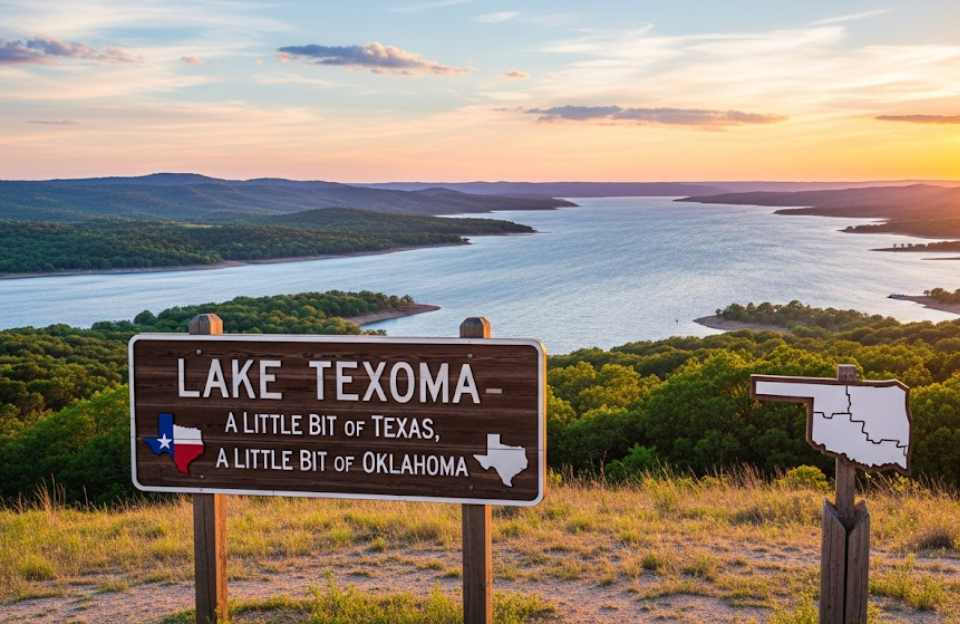Language is more than communication—it reflects identity, culture, and respect. A prime example is how we write the names of places that hold deep significance. One such case is Lake Texoma, a beloved landmark straddling Texas and Oklahoma. Many ask whether it should be capitalized, and the answer is clear: Lake Texoma should be capitalized. Beyond grammar rules, this choice honors its geographical identity and the pride of the communities that surround it.
Key Takeaways
- Lake Texoma should be capitalized because it is a proper noun.
- Grammar rules state that names of specific places, like lakes, rivers, and mountains, require capitalization.
- Lake Texoma is a significant geographical landmark spanning Texas and Oklahoma, making correct capitalization essential.
- Proper capitalization shows respect for local pride, culture, and identity.
- Using the correct form helps businesses, tourism boards, and writers maintain professionalism and credibility.
Grammar Rules Behind Capitalization
Capitalization in English follows clear rules, especially when it comes to proper nouns. Proper nouns are the specific names of people, places, organizations, and landmarks, and they must always begin with a capital letter. This rule ensures that readers can immediately distinguish between a general term and a unique, named entity.
In the case of lakes, the word lake on its own is a common noun and is written in lowercase:
- Example: We went swimming in a nearby lake.
However, when lake is part of a full name—such as Lake Michigan, Lake Tahoe, or Lake Texoma—it becomes part of a proper noun. In that case, both the generic word (Lake) and the specific identifier (Texoma) are capitalized.
- Correct: Lake Texoma is a popular destination for fishing.
- Incorrect: lake Texoma is a popular destination for fishing.
This distinction aligns with standard grammar guides like the Chicago Manual of Style, AP Stylebook, and MLA Handbook, all of which emphasize that geographical names are always capitalized. By following this rule, writers maintain clarity, professionalism, and consistency.
Geography and Identity of Lake Texoma
Lake Texoma is one of the largest reservoirs in the United States, straddling the border between Texas and Oklahoma. It was created in 1944 following the construction of the Denison Dam on the Red River. Built by the U.S. Army Corps of Engineers, the project was originally designed to provide flood control, hydroelectric power, and a stable water supply to the surrounding region. Today, the dam continues to generate electricity while ensuring water security for nearby towns and cities.
Covering more than 89,000 acres with nearly 580 miles of shoreline, Lake Texoma is often called the “Playground of the Southwest.” Its vast waters and scenic surroundings make it a premier destination for boating, camping, hiking, and water sports. The lake is particularly famous for its striped bass population, which thrives in its deep waters and draws anglers from across the country.
The historical development of Lake Texoma added more than just infrastructure—it transformed the region. During and after World War II, the creation of Denison Dam provided much-needed jobs and helped stabilize local economies. Over the decades, the lake grew into a centerpiece for tourism, recreation, and community growth, shaping the identity of both Texas and Oklahoma residents.
Capitalizing its name is not merely a grammatical rule but a way of recognizing its importance as a landmark. Just as we write Grand Canyon or Mount Rushmore with capital letters, Lake Texoma deserves the same respect. For locals, it represents not only a geographic feature but also a symbol of heritage, pride, and economic vitality.
Local Pride and Cultural Significance
Lake Texoma is more than a body of water—it is a symbol of community identity and pride for residents in both Texas and Oklahoma. Since its creation, the lake has become a centerpiece for family traditions, outdoor recreation, and regional celebrations. Generations of locals have grown up fishing, boating, and camping along its shores, making it a place tied not only to leisure but also to personal memories and cultural heritage.
Economically, the lake supports a vibrant network of businesses, marinas, resorts, and restaurants that depend on its popularity. Tourism driven by Lake Texoma generates millions of dollars annually, sustaining jobs and fueling small-town economies across the region. Events such as fishing tournaments, holiday gatherings, and community festivals also highlight the lake’s role as a hub of social connection.
Culturally, Lake Texoma is woven into local storytelling, music, and even regional branding. For many residents, saying “Lake Texoma” instantly evokes pride, belonging, and recognition. That’s why proper capitalization matters—it reinforces the respect due to a place that plays such a central role in daily life and regional identity. Writing lake Texoma in lowercase diminishes its stature, while Lake Texoma in its correct form affirms its significance as a cherished landmark.
By capitalizing its name, we honor not just a geographical feature but the people, traditions, and culture that surround it. It is a small act that carries great weight, signaling recognition of the lake’s importance in the hearts and histories of local communities.
Why It Matters Beyond Grammar
At first glance, capitalizing Lake Texoma may seem like a small detail, but in reality, it carries weight far beyond the rules of grammar. Proper capitalization reflects respect, professionalism, and accuracy in how we talk about significant places. When writers, businesses, or media outlets fail to capitalize the name correctly, it can appear careless or diminish the importance of the location.
For local communities, capitalization signals recognition and value. Writing Lake Texoma correctly affirms its status as a landmark with cultural, economic, and historical importance. Lowercasing it, on the other hand, may unintentionally downplay its identity and the pride residents feel for their region.
In professional contexts such as tourism campaigns, business marketing, or educational materials, correct capitalization helps build trust and credibility. A brochure that says “lake Texoma” may be seen as unpolished, while one that says “Lake Texoma” reflects attention to detail and respect for the audience.
From a digital perspective, capitalization also plays a role in search engine optimization (SEO). Most travelers and researchers type “Lake Texoma” with capital letters when searching online. By using the correct form, websites align with common search habits, improving their chances of ranking higher in search results and reaching the right audience.
Ultimately, capitalizing Lake Texoma is about more than language mechanics—it’s about honoring a landmark, supporting community pride, and upholding professional standards in all forms of communication.
FAQs
1. Should Lake Texoma be capitalized?
Yes. Lake Texoma should be capitalized because it is a proper noun. Grammar rules state that specific names of places—such as lakes, rivers, and mountains—require capitalization. Writing it as lake Texoma is incorrect and diminishes its importance.
2. How big is Lake Texoma?
Lake Texoma spans over 89,000 acres (about 139 square miles) and has nearly 580 miles of shoreline, making it one of the largest reservoirs in the United States.
3. How deep is Lake Texoma?
The lake reaches an average depth of about 39 feet, with some areas plunging to more than 100 feet near the dam.
4. Is Lake Texoma man-made?
Yes. Lake Texoma is a man-made reservoir, created in 1944 with the construction of the Denison Dam on the Red River by the U.S. Army Corps of Engineers.
5. Where is Lake Texoma located?
Lake Texoma sits on the border between Texas and Oklahoma, fed primarily by the Red River and Washita River.
Conclusion
The answer is straightforward: Lake Texoma should be capitalized, not only because grammar rules demand it, but because doing so shows respect for its geographical identity and the pride of the people who cherish it. Whether you are a student writing an essay, a blogger covering travel, or a business promoting local tourism, always write Lake Texoma with the recognition it deserves.
Mariam holds an MS in Sociology and brings a sharp, people-centered perspective to her writing. She contributes to multiple websites, covering business, current news, and trending topics with insight and creativity that connects with readers.


